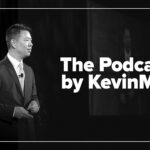Longevity can be a polarizing topic. For some of us, it conjures images of a grandparent’s final years, filled with chronic diseases and prolonged suffering. Understandably, we would not want any part of that.
However, longevity science is not only about extending lifespan but also healthspan — the period of life spent in good health, free from debilitating conditions. While medicine has not yet eradicated such age-related diseases, research shows that preventive measures can delay their onset and promote a longer healthspan.
It all starts with tracking our body’s built-in key performance indicators (KPIs)—a.k.a. our biomarkers.
A guide to longevity biomarkers for physicians and patients
Just as KPIs reflect a company’s progress, biomarkers reveal what is happening inside our bodies and how they respond to various lifestyle factors and stressors.
If you’re a physician, you are certainly no stranger to working with biomarkers, but it is time to broaden your perspective. You should consider biomarkers not only in the context of disease but also in terms of helping your patients achieve their long-term goals and enhancing their healthspan.
On the other hand, if you are a patient or health enthusiast, you must take an active role in understanding your biomarkers. They are no longer just numbers on a piece of paper that you hand to your doctor and wait for a verdict. You should know what each biomarker signifies, how it impacts your health, and how you can influence it through lifestyle choices.
To guide this journey, we will explore key biomarkers for longevity, divided into two categories: physiological and molecular. Together, these markers provide a comprehensive view of health, promoting data-driven choices to support a healthier, longer life.
What are physiological biomarkers?
Physiological biomarkers provide critical insights into cardiovascular health, physical fitness, and overall resilience.
One of the most important metrics is VO2 max, which measures the maximum amount of oxygen our bodies can use during intense exercise. Typically assessed through treadmill or cycling tests, it highlights our endurance capacity. Higher VO2 max levels are strongly associated with lower mortality rates and a reduced risk of cardiovascular disease.
Resting heart rate, another valuable biomarker, offers a simple way to gauge cardiac efficiency. A lower resting heart rate, often tracked with wearable devices, indicates a heart that pumps blood effectively and efficiently. This is linked to better cardiovascular health and reduced stress levels.
Heart rate variability (HRV) measures fluctuations in the time intervals between heartbeats, reflecting the autonomic nervous system’s balance. Specialized wearables can monitor HRV, revealing how well our bodies adapt to stress and recover. Higher HRV suggests better stress resilience and inflammation management.
Muscle mass and strength are equally essential. Methods like bioelectrical impedance analysis and DEXA scans help assess muscle health. Greater muscle mass supports physical performance, faster recovery, and long-term mobility. As aging can lead to muscle loss, known as sarcopenia, maintaining muscle mass through strength training becomes vital. It lowers the risk of falls and fractures and improves overall survival.
What are molecular biomarkers?
Molecular biomarkers provide a comprehensive overview of metabolic, inflammatory, hormonal, and cardiovascular health.
Blood glucose levels and insulin sensitivity, now conveniently tracked with wearable sensors and home kits, reflect how efficiently the body utilizes carbohydrates for energy. Stable glucose levels and high insulin sensitivity help prevent energy crashes, promote recovery, and reduce the risk of type 2 diabetes and cardiovascular disease.
Inflammatory markers, such as C-reactive protein (CRP) and interleukin-6 (IL-6), require blood tests and reveal the body’s inflammation levels. While short-term inflammation is essential for recovery, persistent low-grade inflammation compromises performance, increases injury risk, and shortens healthspan. Managing chronic inflammation is key to maintaining resilience and reducing disease risks.
Hormones also play a crucial role in overall health and fitness. Testosterone, growth hormone, and cortisol levels, measured through blood tests, indicate how well the body supports muscle growth, recovery, and stress adaptation. High levels of testosterone and growth hormone enhance strength and recovery, whereas elevated cortisol from prolonged stress can impair these processes.
Our blood lipid profile, which measures HDL (good cholesterol), LDL (bad cholesterol), and triglycerides, is a significant cardiovascular health marker. Maintaining a favorable HDL-to-LDL ratio is more important than focusing solely on total cholesterol. A healthy lipid profile reduces the risk of chronic diseases like heart disease and stroke, which directly impact longevity.
Lastly, telomeres, protective caps at the ends of chromosomes, serve as a unique marker of cellular aging. Shorter telomeres are associated with decreased recovery, fatigue, and higher injury risks, making them an essential factor in monitoring long-term health.
Managing biomarkers over time
Biomarkers are most valuable when measured consistently over time, as they reflect dynamic changes influenced by exercise, nutrition, and overall lifestyle.
For example, by tracking biomarkers that signal overtraining or fatigue, such as cortisol, CRP, and heart rate variability, we can catch early signs of physical and mental strain. This helps us adjust training intensity and avoid the pitfalls of burnout or injury.
Personalized nutrition also hinges on biomarker analysis. Markers like blood glucose, cholesterol, inflammatory proteins, and vitamin levels reveal how our body responds to specific diets and supplements, enabling tailored nutritional strategies.
By integrating such biomarker tracking into clinical and personal care, we gain actionable insights to fine-tune our lifestyles. This process, thus, becomes the bridge between daily vitality and a long, thriving healthspan.
John Thomson Smith is a physician executive.



















![Sibling advice for surviving the medical school marathon [PODCAST]](https://kevinmd.com/wp-content/uploads/Design-1-190x100.jpg)

![Leadership buy-in is the key to preventing burnout [PODCAST]](https://kevinmd.com/wp-content/uploads/Design-4-190x100.jpg)
